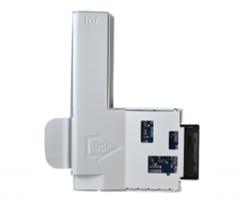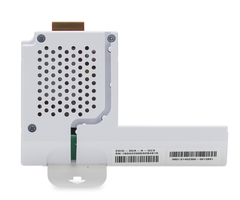Does A 2GIG GC3 Require An Internet Connection?

The 2GIG GC3 control panel does not require an internet connection. The panel comes with a built-in WIFI communicator, which is enabled in firmware version 3.0.2 or later. The 2GIG GC3 requires a cellular communicator in order to support monitoring and remote services through Alarm.com.
The compatible GC3 cellular communicators are:
The 2GIG LTEV-A-GC3

The 2GIG 3GA-A-GC3
 The 2GIG 3GR-A-GC3 (Rogers, for use in Canada only)
The 2GIG 3GR-A-GC3 (Rogers, for use in Canada only)

Only an authorized 2GIG alarm dealer can activate the system's cell communicator. Each cell communicator comes with its own SIM card (AT&T, Rogers) and no other sim card should be used. Users will need to provide the dealer with the serial number (ADC number for Verizon units, IMEI number for AT&T and Rogers), which is found on a sticker on the communicator itself. The alarm dealer can then build the customer's account with Alarm.com
There are many benefits of connecting the 2GIG GC3 to a central monitoring station. With central station monitoring, trained operators are monitoring alarm systems 24/7 and will dispatch authorities if needed. When a burglary signal is received at a central monitoring station, a trained operator will first call the user's contact list to verify whether or not the alarm is false. If no contact is made, or if a user requests dispatch, or provides an incorrect password, the operator will dispatch authorities. If a duress or panic alarm is received, the operator will not call the contact list, they will dispatch authorities immediately.
With Alarm.com remote services enabled, a world of remote control capabilities become available. Among them, users can remotely control the alarm system, including arming and disarming. They can also control home automation devices, and view video surveillance, if applicable. This can be done from any computer, Android, or iOS device. Users can also set up notifications (text, email or push notification) that can be sent to the customer and to others. These notifications can include being notified when the system is armed, or disarmed, when an alarm or a trouble event occurs, when automation devices are controlled, and when cameras detect motion, if enabled.Did you find this answer useful?
We offer alarm monitoring as low as $10 / month
Click Here to Learn MoreRelated Products




Related Categories
- Home Security Systems
- Business Security Systems
- Wireless Alarm Control Panels
- Apartment Security Systems
- DIY Wireless Security Systems
- Monitored Home Security Systems
- Small Business Security Systems
- Answered
- Answered By
- Julia Ross
